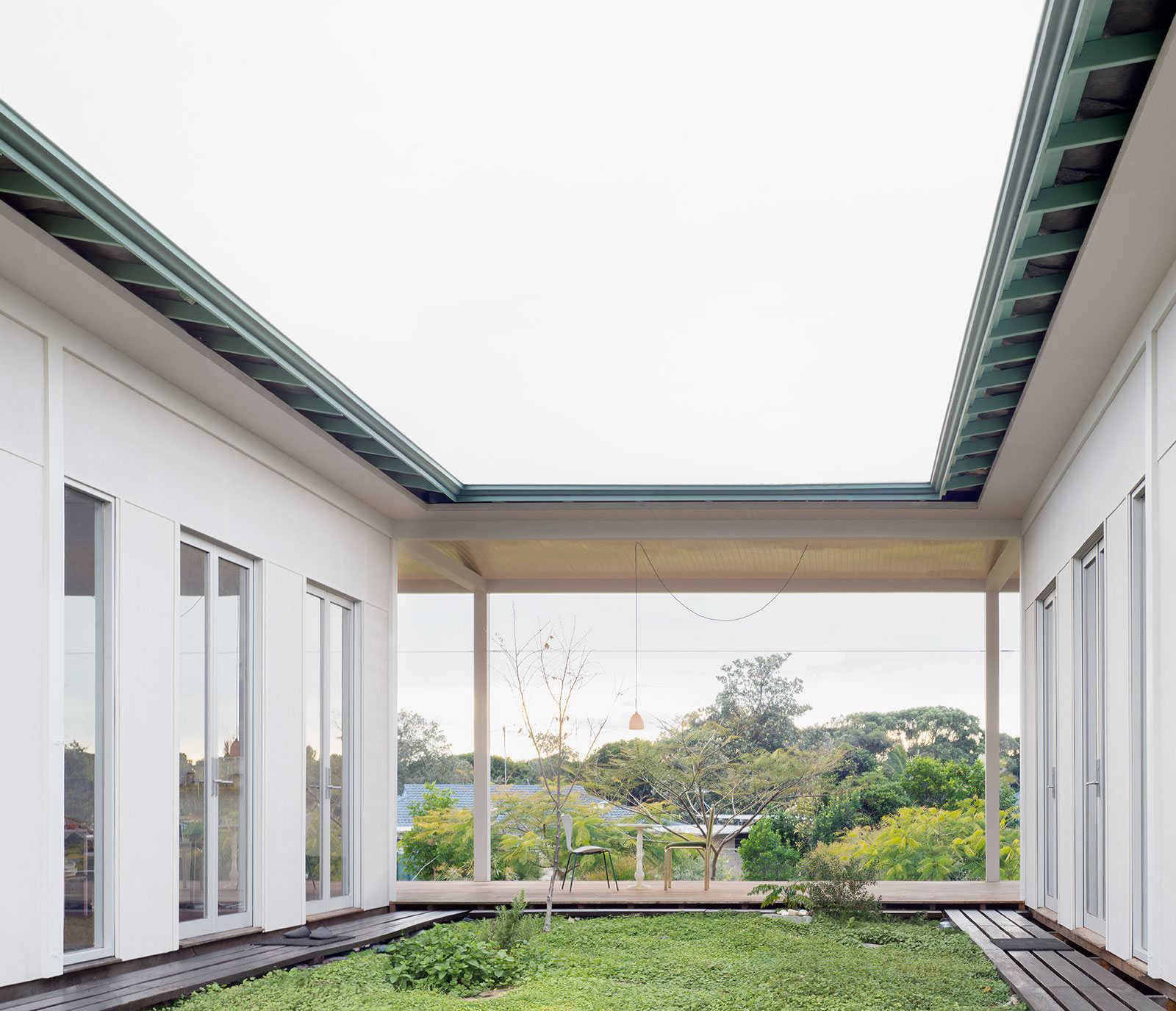House with a Guest Room is a minimal home located in Melbourne, Australia, designed by Andrew Power. The house is made of three parts; a living room, a bedroom and a guest bedroom. The bedroom and the guest bedroom are equal in size, and balanced at opposite ends of the house. The living room is larger and sits between the two bedrooms. The guest and host share this room together. In the evening they eat and drink together. Afterwards they part in opposite directions. To reach their bedrooms, the guest walks through a courtyard while the host walks through an empty hall. The living areas and sleeping areas are physically separated, and so their accompanying routines are separated too. Cooking then eating, then showering, then sleeping – routines like these organize ordinary life.
Only in the the gaps between these routines is there chance for an overview. In the house, these gaps are expressed as empty rooms, a hall and a courtyard. Identical doors connect the empty rooms to the functional rooms so from room to room all the doors align. They frame long views through the house. From one bedroom you can see across the garden, over the kitchen, and catch a glimpse of someone getting ready for bed. Their sense of privacy comes from nothing other than distance. On a warm evening with all the doors open, the rooms disappear, and it’s like being in an orchard. There are also views to the garden, framed by columns running along the edge of the house. The row of columns is the facade of the house. It’s not a facade that is looked at but one that is looked through. The columns and doors are repeated throughout the house so that each area, however separate, relates to the whole.
